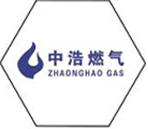
Sep . 14, 2024 23:36
Back to list
صمام تخفيض الضغط
Understanding Pressure Relief Valves A Key Component in Pressure Regulation
Pressure relief valves (PRVs) play a critical role in various industrial applications by maintaining safe and controlled operating pressures within systems. These valves are designed to prevent overpressure conditions that could lead to equipment failure, system rupture, or catastrophic accidents. Understanding their function and importance is essential for engineers and safety professionals in many industries, including oil and gas, chemical manufacturing, and water treatment.
.
The design of a pressure relief valve can vary depending on the application. Common types include spring-loaded, pilot-operated, and deadweight valves. Spring-loaded valves are among the most widely used, as they rely on a spring mechanism to hold the valve closed until the set pressure is reached. Pilot-operated valves, on the other hand, use a smaller valve (the pilot) to control a larger valve, allowing for more precise pressure regulation. Deadweight valves utilize the force of weights to maintain closure until the system pressure rises above a certain level.
صمام تخفيض الضغط

It is crucial to select the appropriate PRV based on the specific needs of a system. Factors such as fluid type, temperature, pressure range, and installation location must be considered. Additionally, regular maintenance and testing of PRVs are necessary to ensure their reliability. Over time, seals and springs may wear out, reducing the effectiveness of the valve. Routine inspections help identify potential issues before they lead to failures.
The significance of pressure relief valves extends beyond maintaining operational efficiency; they are also vital for ensuring the safety of personnel and the environment. Failure to address overpressure situations can have severe consequences, including explosions, fires, and hazardous material releases. Consequently, industries are governed by stringent regulations that mandate the installation and proper maintenance of PRVs.
In conclusion, pressure relief valves are essential components for maintaining safety and efficiency in various systems. By preventing overpressure situations, they protect equipment and ensure the safety of workers and the surrounding environment. Understanding the different types and functions of PRVs, along with their maintenance, is crucial for professionals tasked with the responsibility of operating and managing industrial processes. As technology advances, the design and capabilities of pressure relief valves continue to evolve, further enhancing their effectiveness in safeguarding industrial operations.
Next:
Latest news
-
Safety Valve Spring-Loaded Design Overpressure ProtectionNewsJul.25,2025
-
Precision Voltage Regulator AC5 Accuracy Grade PerformanceNewsJul.25,2025
-
Natural Gas Pressure Regulating Skid Industrial Pipeline ApplicationsNewsJul.25,2025
-
Natural Gas Filter Stainless Steel Mesh Element DesignNewsJul.25,2025
-
Gas Pressure Regulator Valve Direct-Acting Spring-Loaded DesignNewsJul.25,2025
-
Decompression Equipment Multi-Stage Heat Exchange System DesignNewsJul.25,2025

